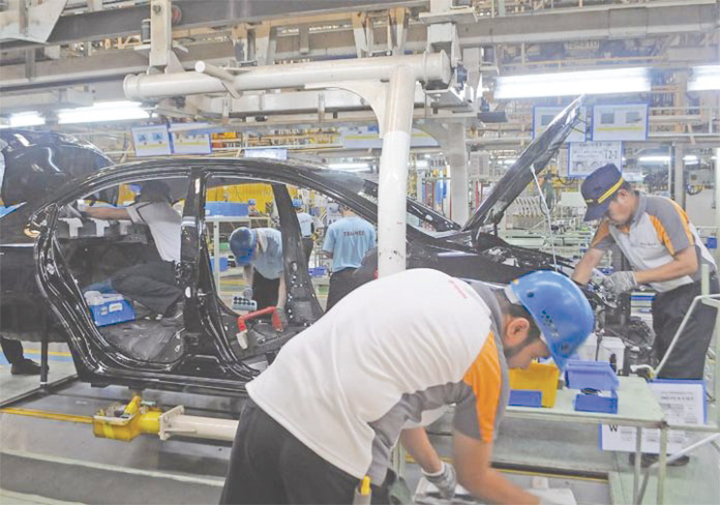
THE triple-digit growth of the country’s manufacturing sector will allow the economy to post robust growth in the third quarter, according to a local think tank.
In its latest Market Call report, First Metro Investment Corp.-University of Asia and the Pacific (FMIC-UA&P) Capital Market Research said, however, that growth may not be close to the 11.8 percent posted in the second quarter.
The think tank said growth may still be robust despite the tighter lockdown imposed in Metro Manila in the July-August period. Earlier estimates noted that GDP growth may have been negatively affected by the lockdowns.
“Foreign direct investment was boosted by large inflows. Despite Metro Manila plus’s tighter lockdown in July-August, new economic data paint a brighter outlook for GDP in Q3 than earlier projected,” FMIC-UA&P Capital Market Research said.
“The Manufacturing sector’s sterling performance in August capped a three-month run with an average monthly YoY growth of 509.3 percent and PMI above-50 in September to boot,” it added.
The manufacturing sector, the think tank said, was able to create 680,000 jobs between November 2020 and August 2021, more than double the 383,000 jobs created by the Construction sector.
FMIC-UA&P Capital Market Research said this was not surprising given the manufacturing sector posted a growth of above 400 percent year-on-year in the June-to-August period alone.
Based on data released by the Philippine Statistics Authority (PSA), the Volume of Production Index (VoPI) grew 534.6 percent in August.
This is slightly lower than the 539.7 percent posted in July but higher than the contraction of 82.2 percent posted in August 2020.
“In fact, these months in 2020 posted the lowest figures last year, but the current levels fall short of prepandemic levels by just over 5 percent,” the think tank said.
“The greater discipline and regular testing of those in the sector probably aided its robust performance, which export data also supported,” it added.
External trade
MEANWHILE, FMIC-UA&P Capital Market Research warned that the slow global recovery could affect the country’s external trade performance, particularly in the second half of the year.
In terms of imports, the think tank said more expensive petroleum products will also lead to wider trade deficits.
The country’s recent export performance was buoyed by the recovery in China, the United States, Germany and Taiwan. However, the recovery is expected to slow in the July-to-December period.
Nonetheless, the local think tank said the growth in East Asian countries, which have also started recovering, may allow the Philippines to meet its target of growing exports by 15 to 18 percent this year.
“The runup of exports should continue for the rest of the year especially considering the recent depreciation of the peso,” the think tank said.
“Elevated prices of petroleum products and other commodities suggest that the trade deficits will remain high and put pressure on the dollar-peso exchange rate,” it added.
In June, this newspaper reported that Filipinos should brace for higher fuel and food prices in the coming months as international oil prices have already hit a record of $75 per barrel, according to local economists.
Former University of Asia and the Pacific (UA&P) School of Economics Dean Peter Lee U said that pump prices in the Philippines are not based on Brent Crude, where oil was reported to have already hit $75 per barrel, but on the Mean of Platts Singapore (MOPS).
Nonetheless, U said, Brent Crude and MOPS “normally move together” which leads him to believe that local oil prices may soon follow suit in terms of increasing prices.
Ateneo Eagle Watch Senior Fellow Leonardo A. Lanzona Jr. told the BusinessMirror that higher fuel would also mean higher food prices. This will also not bode well for economic recovery.
Lanzona said this makes it necessary for the government to ensure that food supply will not worsen the situation. Sufficient food supply will not lead to higher prices and cushion the impact of an increase in pump prices.
He recommended that the government provide supply side interventions by focusing on agro-based industries which help keep food supply sufficient. He said government assistance in inputs for industries are also important.

